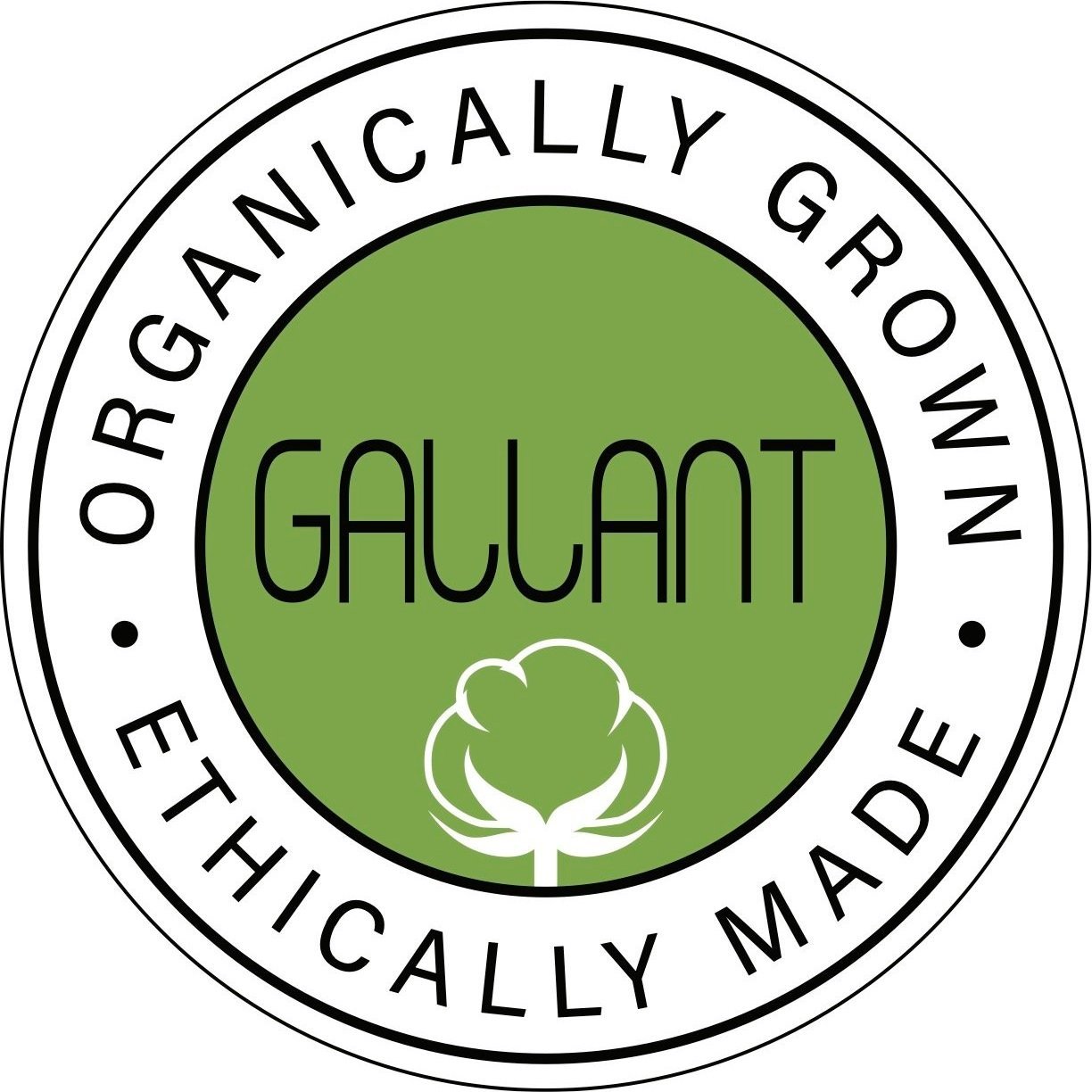Gallant’s products are CARBON NEUTRAL- from the field to your shelves
We make millions of organic cotton products, and we know that you are as concerned as we are about the impact it has on the environment. According to Green Story, organic cotton emits 78% less carbon emissions compared to polyester and 91% less compared to nylon. In addition, organic cotton fiber biodegrades in about six months, whereas synthetic fiber takes hundreds of years. We acknowledge that despite using one of the most sustainable and natural fibers to make our products, there are unavoidable environmental impacts during the manufacturing and shipping processes. That's why we decided to go Carbon Neutral by supporting sustainability projects certified by world-renowned certifiers such as Gold Standard and CDM. These projects focus on renewable energy and afforestation /reforestation- which are reducing our carbon footprint and fostering sustainable development through carbon sequestration and green job creation. This is just another way of reinforcing our commitment to a healthier planet.
Why did we go Carbon Neutral?
We have been making organic cotton products that are always sustainable, ethical, traceable and transparent for businesses around the globe- and now we’re Carbon Neutral too! Going this next step for us completes the circle of our commitment to the preservation of our precious earth.
Let’s talk about Climate Change
Today, greenhouse gas emissions are one of the largest contributors to climate change and global warming. Named after their effect on the environment, greenhouse gas emissions trap heat in the atmosphere. But the greenhouse gases that come from human activities like burning fossil fuels and clear-cutting forests are rising quicker than the planet can naturally regulate, resulting in the impacts that we collectively call climate change. This is where carbon offsets come in.
How offsetting helps with Climate Change
You might be wondering why carbon offsets? Well, they’re an effective tool in the fight against climate change. Between 1950 and 2008, carbon dioxide levels doubled. Carbon offsets support projects around the world that ensure those levels don’t continue to rise. Because our day-to-day habits and the products we use all emit greenhouse gases, we can opt for carbon-neutral products to help support projects that reduce the impact of those emissions by reducing or sequestering carbon.
There are different types of carbon offset projects that we are working on to offset our carbon emissions.
Reforestation: conserves and plants tree- naturally sequestering carbon from the atmosphere &
Renewable energy: projects convert energy sources away from fossil fuels, reducing emissions and creating clean power grids for the future; and community initiatives, where support is given to transition to more efficient day-to-day technologies.
Developers partner with communities to ensure that they have the resources to get these projects off the ground. And, selling carbon offset credits through initiatives like Green Story’s carbon offset tool provides crucial funding for these projects to continue to thrive. Below are the projects we are supporting.
Renewable Energy Project
About the project:
A solar energy project in Rajasthan, India that generates clean and renewable electricity. It is composed of 3 power plants, with a total installed capacity of 400MW.
At a glance:
Replaces coal fired thermal energy sources to reduce an average of 694,471 tonnes of C02 per year. The project developer (can we name a developer?) supports supplemental initiatives that uplift community members and protect the environment.
Social benefits of the Project:
Supports rural electrification projects covering almost 3000 villages in the region.
Currently funds 12 local schools providing them with upgraded infrastructure and basic amenities.
Environment benefits of the Project:
Reduces greenhouse gas emissions by eliminating the need for coal fired thermal energy sources.
Generates 732,874 MWh/year of clean renewable energy.
How it works:
Project developer funds and installs solar panels, a renewable energy source that generates electricity. The electricity is sold to the state energy grid, displacing the need for energy generated by coal fired thermal power sources. Greenhouse gases are reduced, the grid becomes cleaner, and offsets are sold to continue developing the project and supporting the community.
For more information, please CLICK HERE.
Reforestation Project
About the project:
This project takes degraded land owned by small scale and underprivileged farmers and supports soil restoration by replanting degraded land with trees to increase forest cover, resulting in carbon sequestration.
At a glance:
The project currently supports 12,002 farmers covering 14,969 hectares of land across three different states in India. Besides increasing the forest cover, the project is a source of livelihood and income in local communities.
Social benefits of the Project:
Supports local job creation to maintain and run projects and silviculture.
Carbon revenues generated through the project will be shared with participating farmers.
Environmental benefits of the Project:
Increases forest cover which is a key method of sequestering carbon
Reduces topsoil degradation from wind and water erosion
Conserves biodiversity promoting soil health
How it works:
Farmers and communities that own small plots of degraded land are given financial support and technical guidance to begin replanting on their land. Community members are hired to help with the task of replanting and maintaining the degraded lands. Once replanted and matured, carbon will be sequestered promoting biodiversity- playing a role in supporting soil health. Land that would have laid bare is now a source of livelihood, and any carbon revenue generated goes back to the participating farmers thus stimulating the local economy.
For more information, please CLICK HERE.
